Hospital Management Software Development: An All-in Brief
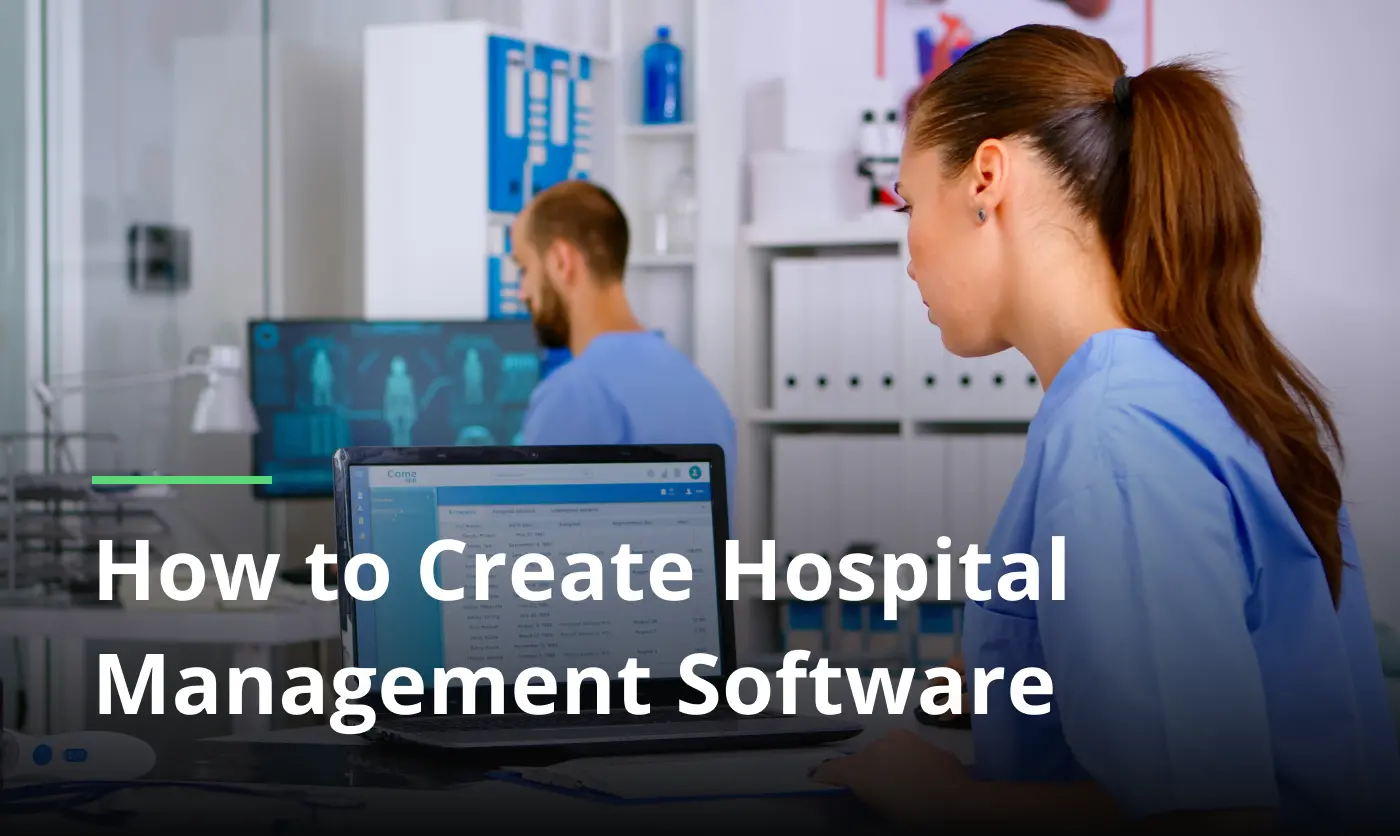
Hospital management software development (HMS) is an intricate and multilayered matter that needs to be studied carefully to get the most out of it. In order to ensure clarity, we put together this sweeping synopsis for you to easily navigate the topic, taking into account that the target healthcare market is projected to surpass $16.6B in 2031.
To set a bigger picture of how to create hospital management software, we outlined an action-by-action guide with explanations of every step that should be taken to reach planned benchmarks. We also summarized the functionalities of an administrative medical application and prepared a manual that will assist you in choosing a next-gen tech company.
Read on to grasp the specifics of hospital management system development entirely and get familiar with the costs of services as well as with the way experts of various caliber charge for clinic software development that overhaul the medical sphere. Understanding the particulars we explained below leads to better HMS solutions implementations.
What is a hospital management system (HMS)?
There are various versions of center care operation platforms: those that help quicken staff’s duties assignments, equip people with information and connect them with specialists. Embracing them reduces day-to-day expenses and optimizes workflow. The procedure for producing such apps is called hospital management software development. It is typically done by teams of programmers who possess far from ordinary knowledge of the medical sector.
The main intricacy of building a controlling suite like that lies in the necessity of adhering to strict regulation, for example, governance privacy, represented by HIPAA in the USA and GDPR in the EU, data exchange standards, including HL7, DICOM, FHIR and many others. While some of them are required for general digital ventures, medical facility tools also have an extra layer of criteria to follow.
Types of hospital management systems
Healthcare software development has a purpose to support the varied operations of medical institutions, aligning with their specific workflows, size, and the nature of care they provide. They are constructed with the aim of addressing the individual needs and goals of each organization.
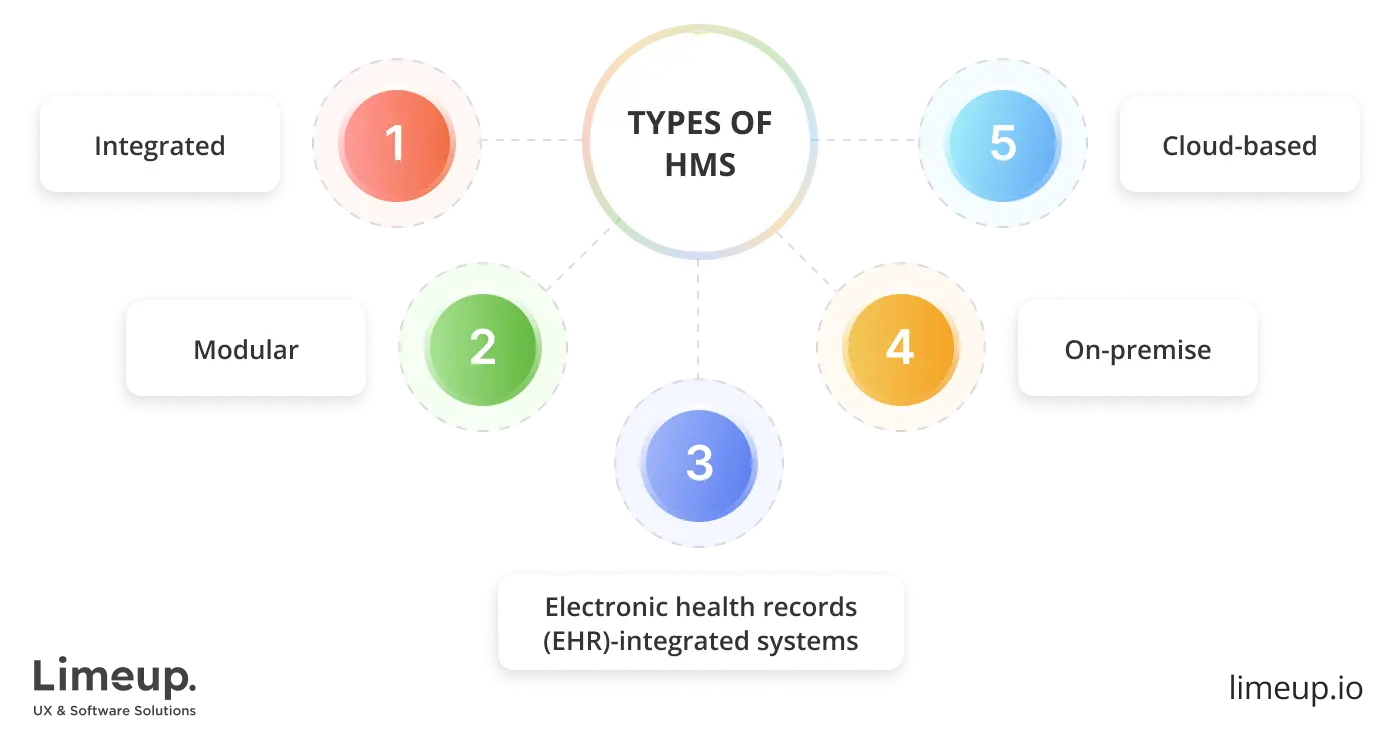
Integrated HMS. Equipped with a broad suite of functionalities, this type of application anchors the day-to-day rhythm of clinical and administrative tasks. Core activities such as patient intake, appointment scheduling, billing and inventory management come together in a single hub, simplifying cross-department workflows.
Modular HMS. Instead of going all-in with an integrated setup, medical centers are able to cherry-pick modules that match their daily operations and scale as they go. They may be patient coordination, billing, laboratory management and pharmacy tracking. These setups provide room for expansion and flexibility, and thus are a nice fit for small clinical organizations needing tailored functions at various phases.
Cloud-based HMS. Hosted off-site and accessed online, cloud-based hospital management system development tools helps to minimize IT overheads, scale according to demands and keep information updated without delay. They are especially helpful for clinic sellers with multiple locations or who require impeccable access to information wherever they may be.
On-premise HMS. Directly downloaded onto servers owned by the hospital, on-premise systems provide institutions with greater control of sensitive data and in-house safeguards. Medium to large-sized organizations, which may afford to manage their own infrastructure, prefer them because of the high level of customization and use according to requirement.
Electronic health records (EHR)-integrated systems. Their main role lies in handling patient records electronically, yet they frequently mesh with other modules to complete the hospital puzzle. Medical experts are able to effortlessly pull up and update patient information, which is essential for delivering timely and accurate treatment.
How to create hospital management software in 5 steps?
The adoption of advanced technologies in the HMS market increases due to the spreading awareness of the advantages such implementation gives. Supported by governments from everywhere, these enhancements help revolutionize the method of hiring, administering, patient meeting scheduling and so on. Further in our review, we outlined the roadmap for crafting a tech suite in detail:

Step 1. Make your idea take shape
To build a hospital management system, the first step is to get your ducks in a row. When you delegate your accomplishment to seasoned suppliers, this stage requires your utmost attention more than anything else since the way you summarize your expectations determines the final product. What is the purpose of your program? How quickly must it be completed? Who do you construct it for? The more detail you provide, the better the outcomes.
Partnering with high-grade healthcare software development companies, you can count on their experience. Even if you can’t gather all your prerequisites beforehand, the well-versed programmers will help you brainstorm the concept together.
Step 2. Settle on the functionalities
As soon as the initial blueprint is ready, your hospital management software developers indicate the features that will be embedded by them over the course of collaboration. In the next section of our brief we pinpointed the most essential attributes of an app that you need to be aware of.
Having a full picture, the innovative troubleshooters choose the suitable technology stack. Simply speaking, they opt for the programming languages, frameworks and libraries that will allow them to bring in clinical tools without delay, taking into account all your wishes.
Step 3. Lay out a design
Tech savants begin to create a hospital management system with its interface. With the invention of integrating satisfying perks for customers, they think out the flow precisely, making the navigation intuitive and appealing.
It can be later powered by code and turned into a minimum viable product to quicken early users’ validation by spending limited resources to check whether the deliverable arouses any interest within your target audience. Taking this path, you’ll see how popular it is with your prospects and get important feedback.
Step 4. Engineer and test
Gradually, the advancement of the building process comes to the phase when the technicians you team up with develop a hospital management system. The procedure covers aspects like implementing the functions, merging all the components, leveraging strong security tools and integrating third-party instruments if, for example, you want to add payment methods to your undertaking as well as AI-powered adjustments, which now change everything in the sector.
To make a health facility automation platform workable, a thorough examination must be conducted. You have probably dealt with poorly revised portals for which it takes too long to compute the data, with errors appearing once and again, ruining the positive impression and the desire ever to approach this web utility in the future. That’s why overlooking this stage is not recommended.
Step 5. Maintain
Having finalized the engineering and analysis of carrying out and locating its vulnerabilities, you will still need the assistance of a health tech creation agency to keep the solution in line with the security and standards requirements. The digital landscape is an ever-changing space with new tendencies appearing regularly. You can expect programmers to adapt your proposition to the emerging trends, for example, blockchain technology.
Alongside renovating your executable eventually, virtual transformation leaders you are going to synergize with will collect necessary data from your clients to elevate the effectiveness of clinical coordination resources and keep them relevant.
Features of the hospital management system development
Based on your specifications, the elements that your program entails may vary significantly since there are many types of them. In this overview, we incorporated those setups that are usually available in an abundance of apps that are mostly used for internal purposes:
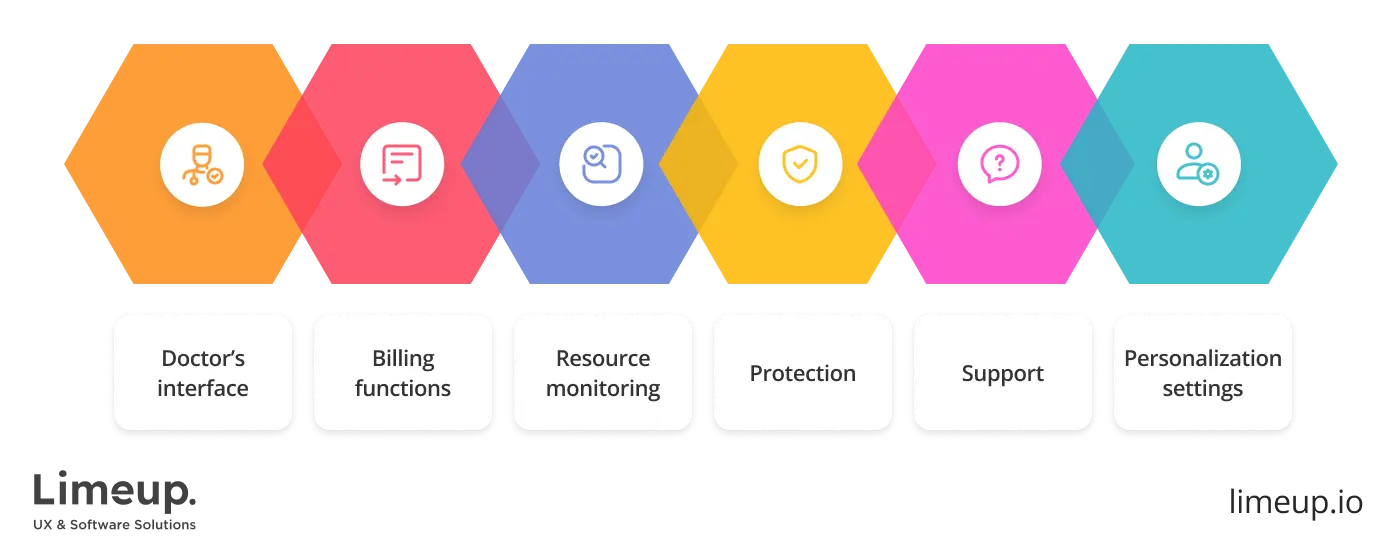
Doctor’s interface. Hospital management system development comes with a hub for staff. It can be a medical providers’ console with hours available for booking, records about their awards, education, specialization, addresses of the places they work in and other contact details.
Regarding staff pages, the list of possibilities is pervasive, incorporating reminders about appointments and duties to fulfill, access to the story of the illness of the recipients assigned to them and the results of the previous lab examinations.
Billing functions. Is the purpose of your initiative to empower your buyers with the chance to purchase your services? Make sure that it has well-known financial transaction gateways. By studying your audience’s preferences, pick those that are used the most.
Give the account holders a choice, implementing the most popular charge processing tools so they can opt for the most suitable ones. For instance, about 58% of people covering their expenses online lean toward debit card transfers, while only 38% prioritize online resources like PayPal, Google and Apple Pay.
Resource monitoring. Are you drawn to how to create a hospital management system where you can put together the details of the medicine you have, track its usage, and make the ordering procedure automated? Then, your project must have the property inventory.
Protection. Since customers entrust sensitive information about their names and numbers, it’s crucial to form an impenetrable defense that is in harmony with the existing norms, strong enough to withstand any hacker attacks and prevent leaks.
In addition to the stated, the controls should be diverse and simple to handle. Your consumers could be offered to select biometric or password verification, multifactorial encryption and account backup.
Support. For a modern and popular solution it is impossible to thrive without a decent communication channel. Your users need to know how they can contact you and rectify the issues they have if something unforeseen happens. A top-notch hospital management software development company has the ability to write codes for any type of it, starting with educational AI-fused chatbots for care providers and finishing with phone and email contacts.
Personalization settings. Leaving out the core characteristics we described above, every app must have attributes that will give people the possibility of modifying it to their tastes for them to use it effectively.
The variations of moderated configurations encompass the preferable payment and security options, the theme and color palette adjustments and, of course, localization if you aim to hire dedicated developers to deliver multilingual support that will be accepted in various countries.
What technologies are used in HMS development?
Hospital management software (HMS) is a complex solution that requires a variety of technologies to function smoothly across various operations. These technologies must dispense reliability, defense and high performance while accommodating the day-to-day realities of the medical world. Below, we’ll take a closer look at some of the key technologies used in medical device software development.
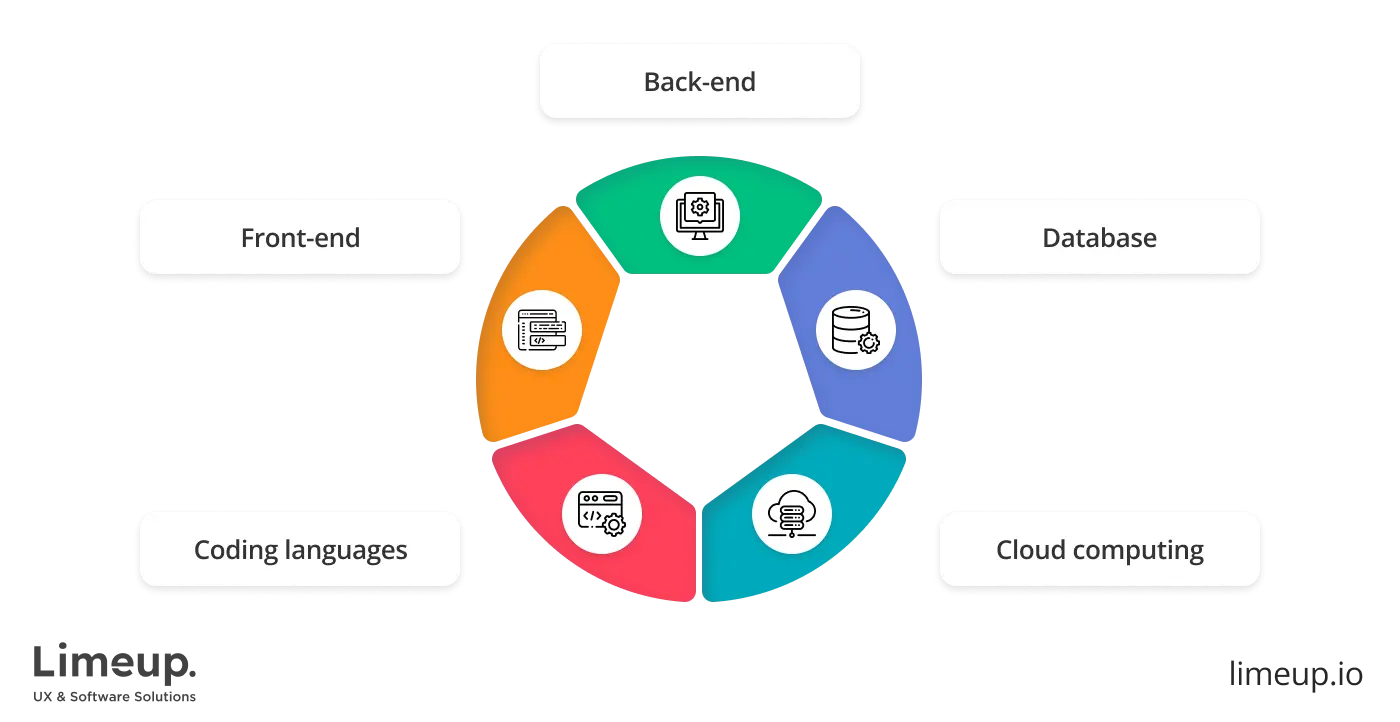
Coding languages. To build hospital management software, the starting point is selecting the right programming languages. Java, Python, and C# are the go-to picks, with a reputation for reliability and flexibility. Java prevails on large projects, admired for its durability and long-term steadiness.
Python, prized for its simplicity and all-encompassing library system, is commonly chosen for quick engineering and controlling complex data activities. Caregiving organizations operating under Microsoft-based systems make C# the obvious choice very frequently, which ensures smooth integration with systems already in place.
Front-end. The user interface (UI) dictates the way healthcare management applications are accessed. A good interface design provides hospital staff with tools to complete their everyday tasks easily, without confusion and wasteful clicking. HTML, CSS, and JavaScript form the basic building blocks of UI development, creating an environment where activities do happen naturally for clinic staff.
JavaScript libraries such as React.js and Angular are especially sought after to develop hospital management software with interactive, responsive front-end interfaces, where users are able to update and view patient records and other related information instantly, without reloading pages.
Back-end. Node.js shines when the pressure’s on, processing waves of simultaneous requests without batting an eye, perfect for hospitals where data streams in around the clock. Django, a Python-based framework, keeps development nimble in its actions while locking down security tighter than Fort Knox, which is non-negotiable in medical software.
Ruby on Rails, much praised for its elegant design and developer-friendly nature, enables teams to build and iterate on applications at a rapid pace, scaling easily as medical facilities expand their operations. These frameworks help keep things on track, giving coders possibility to tackle the big picture without getting bogged down by the details.
Database. Building hospital management software means wrangling a flood of information: patient charts, history logs, payment records and more. SQL stalwarts like PostgreSQL and MySQL tackle structured data with surgical precision.
For messier inputs like diagnostic images and event logs, MongoDB brings its unstructured storage muscle to the table. Together, they let dev teams roll with the punches, scaling smoothly without throwing a wrench in the works.
Cloud computing. Cloud technology has woven itself into the fabric of contemporary hospital software architecture. With platforms like AWS, Azure, or Google Cloud in play, caregiving institutions are able to trim the fat on local server maintenance. As long as there’s an internet connection, practitioners have capability to pull up patient records on the fly, sidestepping location-based hurdles that might otherwise throw a wrench in fast, informed medical decisions.
Anyone with an internet connection may access patient information, allowing care delivery professionals to improve care while overcoming geographical barriers that could hinder timely decision-making. This method keeps everyone on the same page, fostering a sense of unity and speed in a high-pressure environment where time truly is of the essence.
How much does it cost to create hospital management software?
In this segment, we’ll touch upon the criteria that influence expenditure plan formation. Take a look at the prices of hospital management software development services we structured according to the depth of production:

| The type of endeavor | The functions included | Approximate budget | Duration (in months) |
| Basic | Setting up appointments and invoicing. | $25,000 – $50,000 | 3 – 6 |
| Moderate | Electronic Health Records, access to the app based on the role of a user, insurance reports. | $50,000 – $100,000 | 6 – 12 |
| High-end | Integration storage monitoring with the lab panels, following the strict standards of security and interoperability. | $100,000 – $500,000 | 12 – 20 |
| Enterprise | AI-fused features, cloud solutions, the protection secured by blockchain leveraging and connectivity with wearable devices. | $500,000 – $2,500,000 | 20 – 36 |
The above-mentioned means are only rough estimates since the scale of a venture isn’t one aspect that defines spending limits.
Rates charged by programmers
Asking how to develop hospital management software of exceptional quality or within a certain financial strategy, consider the tier of knowledge of a coder:
| Level of versatility | Hourly rates |
| Juniors | $25 – $50 |
| Middle specialists | $50 – $99 |
| Seniors | $100 – $150 |
Additionally, we noted the following things as dependents:

- Infrastructure — the required financial allocation may also differ when utilizing particular frameworks and languages. Engineering tools, just like anything else, have licenses. Employing third-party links with Google products, databases incurs tariffs as well.
- Cooperating model — assembling your own collective or inviting transformative institutions is like night and day. In the first case, you obligate yourself to a durable commitment and cover administrative expenses while synergizing with independent tech integrators doesn’t go beyond your objectives.
- Location of the team — in some regions the cost to hire software developers charges more or less, competitiveness and the state of economy explain it.
How to choose a hospital management software development company?
Joining efforts with the right candidate is what will bring you peace of mind and anticipated returns in no time. Let’s see what it takes to find such talents:
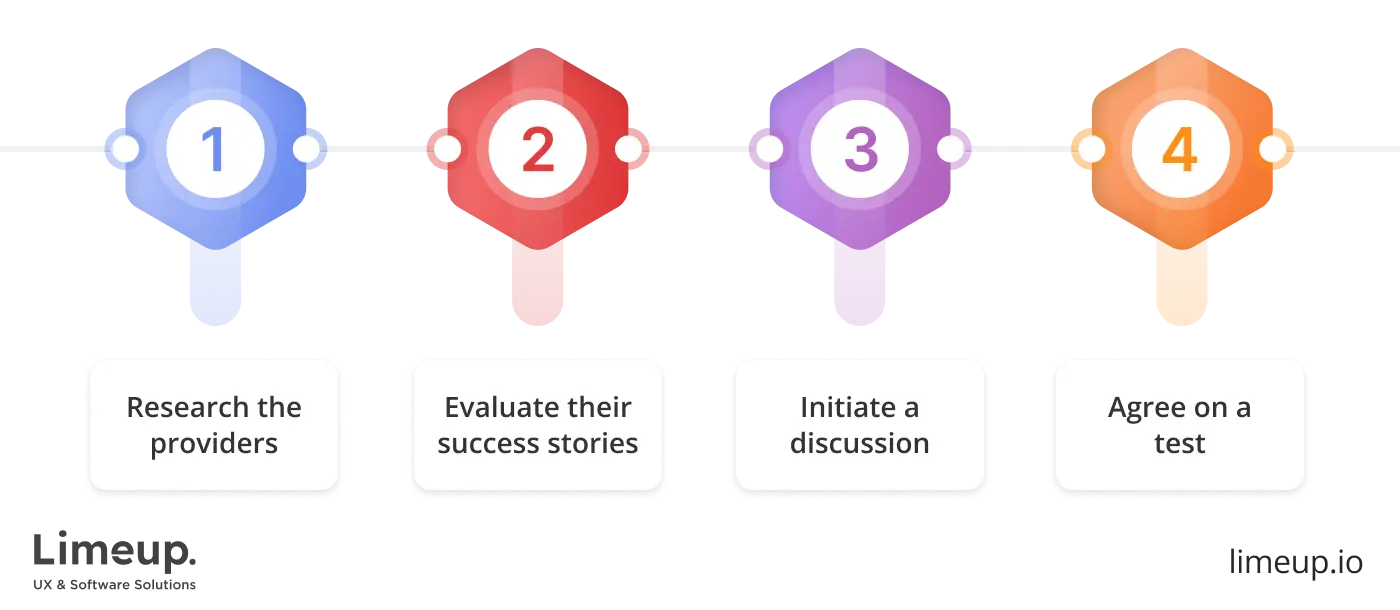
— Research the providers
We have previously said that your understanding of what you expect to get means a lot in completing the administration platform in the best possible way. However, the main threat of unclear objectives is in picking a supplier. If you decide to partner with a team when your idea is too abstract, with time, you can find out that they aren’t proficient enough to carry out your endeavor and it will surely result in financial loss.
To avoid such outcomes, invest your time in examining the basics of the engineering clinic resource planning portals or, to play the safest, contact a full-fledged deliverer who knows how to build a hospital management system of any complexity.
— Evaluate their success stories
Having chosen a few healthcare software development companies to secure your digital transformation, get familiar with the collections of their accomplishments. Freelancers and innovative firms typically disclose some case studies on their web pages. First, by evaluating their works, you’ll get a good grasp of their capabilities, second, the detailed explanation will give you a glimpse of how a particular agency completes their tasks.
Also, pay attention to their websites, they should look trustworthy. Try to find the testimonials from their contractors. See what they have on their sites and check what people tell about them outside their space. If you input an organization’s name in a search engine, you’ll detect independent sources of information that will help you make a more credible choice.
— Initiate a discussion
Feeling satisfied with the tier of their proficiency or having some additional concerns to address, don’t hesitate to reach out to executors. For instance, if you seek clarifications about their hospital management software development services, are interested in getting pricing info recap or are targeted at questioning their mastery, you could hasten your investigation by attending to the matters.
It doesn’t mean if you connect with a digital offerings studio, you immediately start cooperating with them. On the contrary, contacting a few institutions will allow you to appraise their communication skills and determine whether it’s comfortable and convenient for you to associate with them.
— Agree on a test
It’s not always necessary to conduct a trial project if you see clear evidence of their versatility. Yet, if your venture is multilayered then it’s wise to give out a small, one to two-week work that will show you whether the programmers understand how to develop the hospital management system you need.
The assessment may be in the form of a thorough conversation when a candidate explains the manner in which they comply with the standards in the industry, track performance, fix bugs and update codes. Also, you can ask them to build a small part of it — an element of the interface or a dashboard with the records of customers. Even though it’s not for free, it remains the most sustainable tactic to pick those who will help you activate your business’ growth.
Why choose Limeup to build your next HMS?
Having finished our synopsis, you obtained essential knowledge of the basics of such wellness applications, gained insights into selecting procedures and got acquainted with the workflow of experienced innovators. However, some points still need to be clarified in order to be fully aware of all the underlying issues.
With a seasoned hospital management system development company, you’ll be able to bypass a great deal of difficulties that may arise while building a health facility operation tool thanks to their experience and comprehensive understanding of the methods that will help you accelerate the tedious duties, bring more value to your clients and streamline the flow of revenue. Engage with Limeup to acquire the best patient care application.

